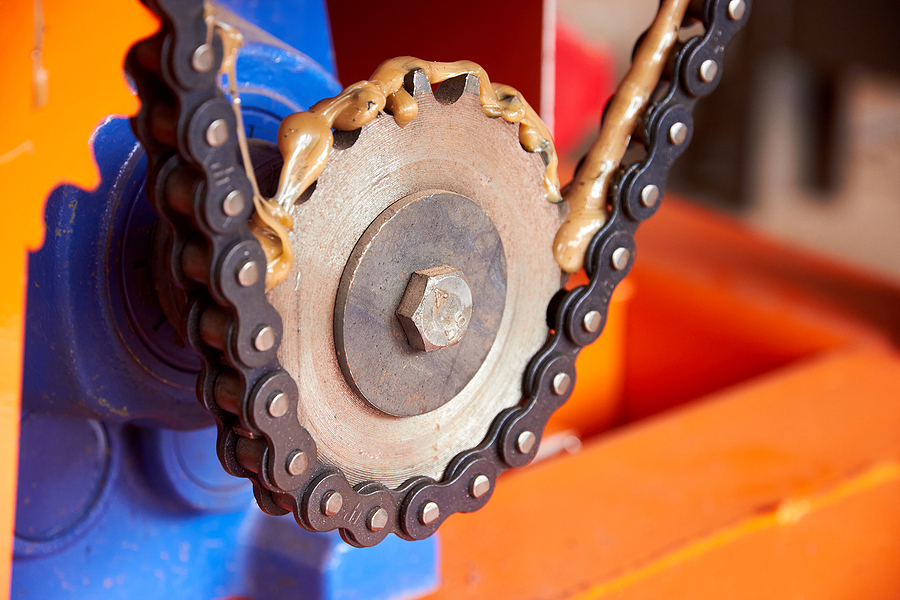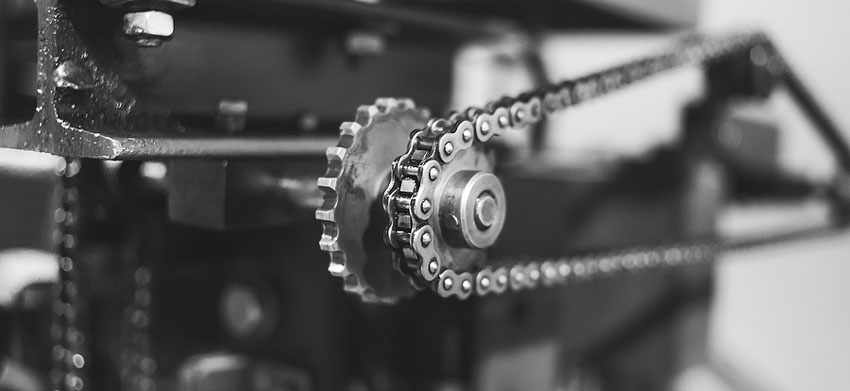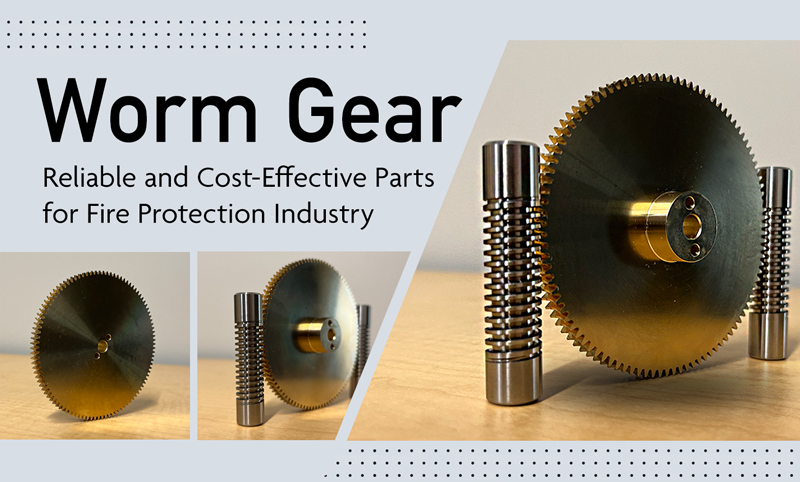Introduction
Like many mechanical products in the power transmission industry, roller chain sprockets undergo wear and tear. Once the sprocket experiences substantial due to friction and repeated cycles of rotations, it becomes worn out and requires rapid replacement.
The sprocket breakdown and its profile reduction can cause tension loss, risk of slippage, jumped chain, and costly downtime. Therefore, repairing and replacing worn-out and old sprockets is crucial. But if industries and individuals fail to maintain it correctly, it can lead to a ‘chain reaction,’ causing harm to connected components.
As a result, industries may experience increased labor costs, higher maintenance needs, unscheduled downtime, and poor-quality manufacturing. But before troubleshooting a worn-out sprocket, you must learn the basics. Below we discuss the causes of tooth wear and its primary types. Further in the article, we’ll dive into how you can diagnose and solve it:
Understanding Sprocket Tooth Wear
Sprocket tooth wear represents the wearing of the tooth profile area due to the repeated cycles of the chain roller. When the chain and tooth profile experience friction, the notches wear away, leading to their sharpening.
Consequently, the tooth profile area creates a poor fit, misalignment, improper chain tension, and increased chain wear. Let’s explore the causes and impacts of sprocket tooth wear:
Common Causes of Sprocket Tooth Wear
The sprocket tooth area and chain may experience wear and tear due to the following primary reasons:
Misalignment
Poor sprocket alignment causes premature chain wear by generating heat and bending the shafts on the drive system. For this reason, it is vital to align the sprockets with the shafts.
Overloading
High compressive and tensile stresses on the gear-tooth surface can create plastic flow failure and excessive wear. Besides this, repeated cycles can lead to fatigue wear.
So, when the sprocket tooth cannot support the applied load, it creates wear.
Lubrication Issues
Inadequate lubrication can lead to wear and tear on the faces of the sprocket teeth. If you notice scratches, visible reduction in the profile area, and grooves in the tooth shape, are signs of lubrication issues.
Environmental Factors
Small, hard particles from the surrounding environment can contaminate the gear teeth and cause wear. In addition, when the sprocket comes into contact with an acid or saline environment, it leads to abrasive and corrosive wear.
Impact of Sprocket Tooth Wear on Machinery Performance
Sprocket tooth wear can damage the machinery’s integrity and performance due to misalignment and abnormal tooth wear. Moreover, the overload, breakage, pressure, and friction on the sprocket tooth impact the operating speed and premature failure.
Furthermore, sprocket tooth wear may cause the sprockets to become wobbly and loose or experience visible changes, leading to reduced performance. For this reason, industries must maintain and repair broken and misaligned tooth profiles.
Diagnosing Sprocket Tooth Wear
Ensure your sprocket tooth is experiencing wear and tear by following these diagnosing steps:
Visual Inspection Techniques
The first step to diagnosing sprocket tooth wear is examining its face. If you notice a shiny strip on the teeth, sharpened edges, or wobbly ends, your sprocket tooth profile likely needs maintenance.
When changing sprockets, technicians must ensure the alignment of the sprockets and shafts since misalignment can cause wear.
Measuring Wear Patterns and Tolerance
If inspection isn’t enough, you might have to measure wear patterns and tolerances. Abrasive, fatigue and plastic wear have distinct wear patterns, so you can determine the underlying cause by studying the wearing on the tooth profile.
Moreover, you can identify whether the sprocket tooth has exceeded its wear tolerance by checking dimensional changes.
Utilizing Advanced Diagnostic Tools and Technologies
Technicians can quickly determine wear on sprocket teeth using innovative diagnostic tools.
Many sprocket evaluation kits and wear indicator technology allow you to check and measure sprocket wear quickly and efficiently. Consequently, you can improve the performance and lifespan of your sprockets.
Solutions for Sprocket Tooth Wear
Now that you’ve learned how to identify sprocket tooth wear let’s dive into how you can solve these issues:
Corrective Maintenance Strategies
Here are several corrective maintenance strategies for troubleshooting sprocket tooth wear:
Sprocket Replacement
Once your sprocket experiences premature wear or fatigue failure, the best solution is to repair and replace it. When installing a new sprocket, ensure proper alignment to prevent future wear.
Tooth Rebuilding or Reprofiling
You can reprofile if your sprocket tooth profile experiences damage in specific parts. Skipping the replacement option and rebuilding can save costs and improve lifespan.
Your technician might use the flip or insertion to enhance worn-out sprocket teeth.
Preventive Maintenance Practices
You can reduce sprocket wear and tear by leveraging the following maintenance practices:
Regular Lubrication and Maintenance
Ensure your sprocket receives adequate lubrication and maintenance to enjoy seamless and smooth operation. Overlooking regular maintenance practices can create increased friction or premature failure.
Periodic Inspection and Alignment Checks
Inspect and realign your sprocket tooth to mitigate the risk of unsafe and wobbly sprockets. It can also reduce misalignment and premature wear.
Proper Equipment Selection and Design
Using the incorrect sprocket design and material can cause overloading or premature failure. Therefore, engineers must ensure their desired sprocket has the mechanical properties and flexibility to support service loading.
Upgrading to Wear-Resistant Sprocket Materials
Choosing the ideal material is crucial to ensuring a hassle-free operation. Upgrading to wear-resistant and long-lasting material can save companies long-term costs.
Since aluminum is soft, it tends to wear faster than steel and cast iron. So, looking for stainless steel or cast iron sprocket teeth is best. That way, you can ensure corrosion resistance, increased tensile strength, improved fatigue resistance, and longevity!
Best Practices for Sprocket Tooth Wear Prevention
Implementing tooth wear prevention strategies is crucial to improving the material’s lifespan and saving long-term costs. Here are five excellent strategies to minimize wear and tear:
Maintenance Planning and Scheduling
Schedule regular maintenance and inspection to ensure you never miss signs of wear and tear. It can also help you determine symptoms of fatigue and abrasive failure.
Training and Education for Equipment Operators
Inadequate training of the operators and assemblers can hurt the performance and speed of your manufacturing operations.
So, educate equipment operators to empower them to maintain and handle the machinery. That way, you’ll equip them to troubleshoot and solve minor issues.
Establishing a Robust Lubrication Program
As discussed, poor lubrication can increase frictional forces and cause premature wear. So, by integrating it within your daily schedule, minimize the negative impacts of inadequate lubrication.
You can task operators to lubricate the sprocket tooth daily or weekly.
Monitoring and Recording Sprocket Wear Patterns
Mitigate the risks of brittle fracture, fatigue failure, abrasive wear, and reduced structural integrity by monitoring wear patterns.
You can quickly identify potential risks by tracking the bending, sharpness, overloading, and corrosion on the sprocket tooth.
Collaboration with Equipment Manufacturers and Suppliers
The best way to prevent sprocket tooth wear is to collaborate with professional equipment manufacturers and suppliers. That way, you can access high-quality and long-lasting sprockets at an affordable cost!
Conclusion
Timely sprocket tooth maintenance and readjustments are critical to avoid premature failure, unscheduled downtime, and costly replacements. By implementing prevention measures, you can minimize the time and cost spent replacing sprocket teeth.
Monitor sprocket wear patterns, train equipment operators, and schedule inspections to reduce premature wear. You can boost manufacturing production quality, operation speed, and revenue that way!

Resourceful and innovative Marketing Pro, with 20+ years of progressive experience in the marketing and creative technology industry. Responsible for digital and traditional marketing efforts that promotes brand awareness, increases engagement, and drives revenue.


















